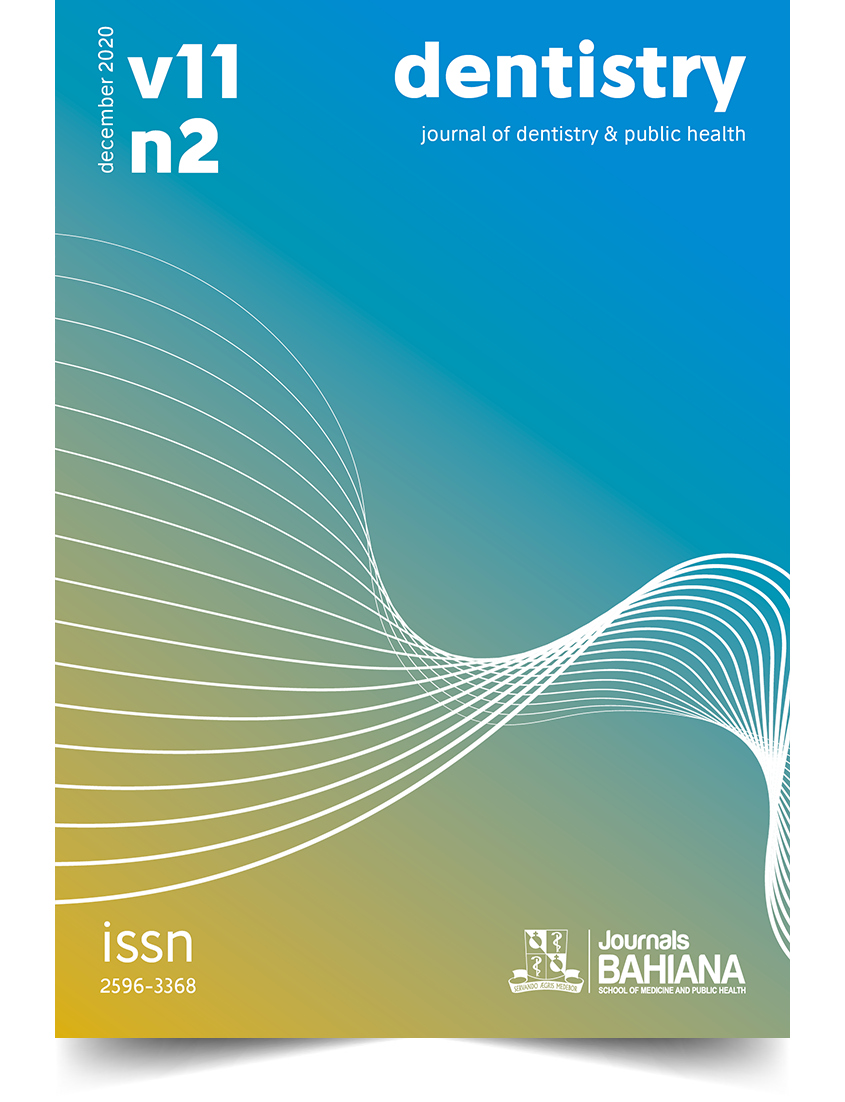O papel do eixo IL-33-ST2 na patogênese da periodontite
DOI:
https://doi.org/10.17267/2596-3368dentistry.v11i2.2944Palavras-chave:
Doença periodontal. Resposta imune. Citocinas. Disbiose.Resumo
INTRODUÇÃO: A periodontite é uma doença inflamatória crônica que surge de uma interação da disbiose local no biofilme subgengival e a resposta imune do hospedeiro. A doença desencadeia um processo inflamatório que pode causar ruptura do tecido periodontal. Além disso, a produção de mediadores inflamatórios pode afetar negativamente outras áreas do corpo e influenciar o desenvolvimento e / ou gravidade de distúrbios associados, incluindo asma, diabetes e doenças cardiovasculares. OBJETIVO: Realizar uma revisão da literatura para investigar exaustivamente o papel de ST2 e IL-33 e a contribuição do eixo IL-33 / ST2 na patogênese da periodontite. MÉTODOS: Trata-se de uma revisão narrativa da literatura, que utilizou as bases de dados Pubmed e Academic Google em um total de 114 resultados. RESULTADOS: Uma gama de marcadores imunológicos têm se mostrado relevante na imunopatogênese da periodontite, citocinas da família da interleucina 1 (IL-1), como IL-1? e IL-33. A IL-33, por meio de seu receptor ST2, parece estar envolvida no desenvolvimento da periodontite, atuando como uma molécula que sinaliza o dano tecidual da infecção e também emite um sinal endógeno que ativa a resposta imune e / ou piora a reabsorção óssea pela ativação da osteoclastogênese, tanto por meio de aumentos em RANK-L e redução de OPG, ou independentemente dessa via. CONCLUSÃO: A diversidade de informações contidas nas metodologias desses estudos dificulta tentativas de padronização e correlações entre os dados publicados, nesse sentido, o eixo IL-33 / ST2 continua sendo um tema relevante nas investigações voltadas para o diagnóstico e tratamento da doença periodontal.Downloads
Os dados de download ainda não estão disponíveis.
Downloads
Publicado
2020-12-15
Edição
Seção
Revisões de Literatura
Como Citar
O papel do eixo IL-33-ST2 na patogênese da periodontite. (2020). Journal of Dentistry & Public Health (inactive Archive Only), 11(2), 148-158. https://doi.org/10.17267/2596-3368dentistry.v11i2.2944



